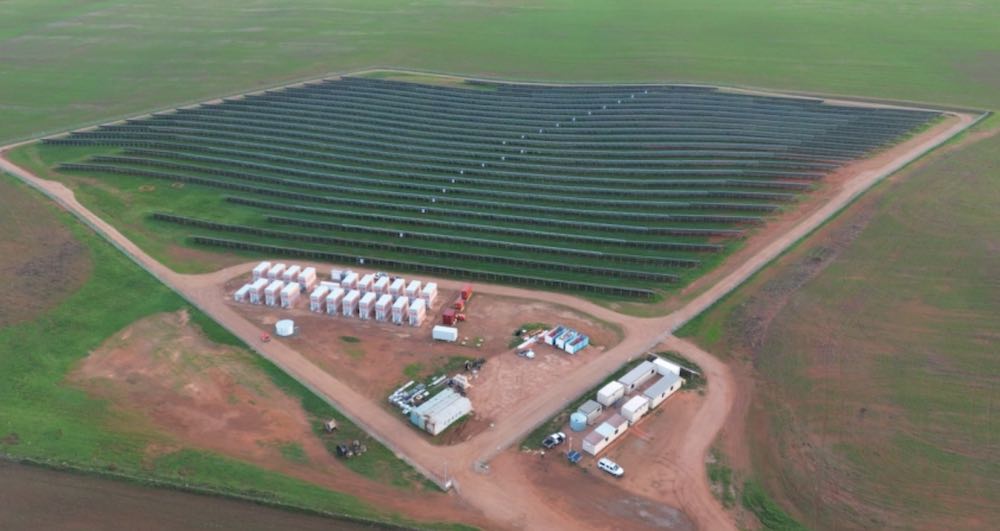A solar farm and vanadium flow battery developed by Yadlamalka Energy in South Australia has reached an exciting milestone in its bid to produce 10GWh of dispatchable solar power a year.
The Arena-backed Spencer Energy project completed civil works and began the “commencement of commissioning” process to finalise the finishing touches with the energy grid before going live in early August.
“That will take probably six weeks, and then we’ll be delivering energy into the grid,” Andrew Doman, Yadlamalka Energy founder and owner told RenewEconomy on Thursday.
“We expect to be able to at full capacity from day one. …We’re very excited.”
The vanadium battery near Port Pirie is currently the largest of its kind in the Southern Hemisphere. The solar farm will be able to produce a 6MW peak, but the real magic is in the battery component which holds 2MW/8MWh.
In its position on the grid near the near Bungama sub-station, the Spencer Energy Project aims to take advantage of the peculiarities of South Australia’s renewables heavy electricity market – where wholesale prices go into negative territory on a regular basis.
The vanadium flow battery will store energy during the day when solar is abundant and shift it to peak periods in the evenings and mornings. It will also participate in the Frequency Control Ancillary Services (FCAS) market which helps maintain stability of the electricity system.
Valiant vanadium
Vanadium redox flow batteries were first invented and proved to be effective by Professor Maria Skyllas-Kazacos and her team in the 1980s at the University of New South Wales.
Although lithium-ion batteries have a higher energy density, meaning the plants need to be bigger, vanadium flow batteries are more powerful in other ways.
One big advantage is that unlike lithium they don’t degrade over time.
While warranties on big lithium-ion batteries might be somewhere in the realm of 15-20 years, vanadium flow batteries – at least chemically – could last indefinitely.
They are also better at energy storage or kilowatt-hours compared to lithium-ion – and the Yadlamalka Energy battery, for example, can be turned on instantaneously to release 2MW of power each hour for up to four hours at a time.
People working on vanadium flow batteries hope this slow release will add baseload power to the grid, similar to what coal and gas is currently providing.
Spencer Energy project
Yadlamalka’s Spencer Energy project solar farm and flow battery system has had some delays in the last few years, after having to move sites due to a heritage assessment finding a large number of Aboriginal artefacts.
However, with the new site almost up and running, the company is looking towards the original site for an even larger facility.
“We’ll go bigger, because in the last three years when we first envisaged this project, the need for storage in South Australia has grown dramatically,” says Dorman.
“South Australia needs medium term storage. There’s quite a bit of lithium battery in South Australia which provides half an hour or one hour support. But if the wind stops blowing and the sun stops shining, one hour support won’t last very long.”
As Doman looks at new projects, he wants to see even more flow batteries installed around Australia.
“We’re prepared to share this technology – the know how – that we built up, with existing solar farms who want to retrofit batteries,” he said.
“One of the reasons ARENA supported us with funding was so that we would share. We’re open to helping people who want that support.”










